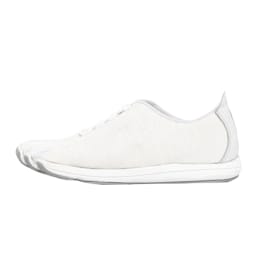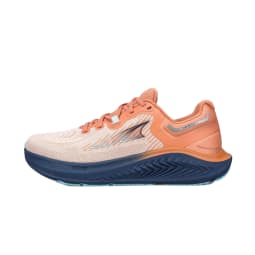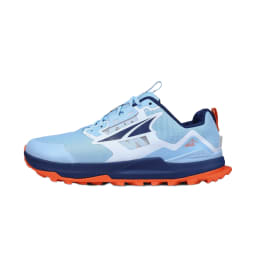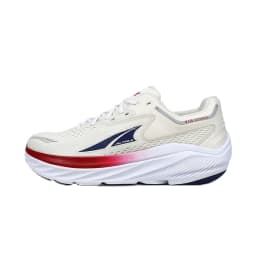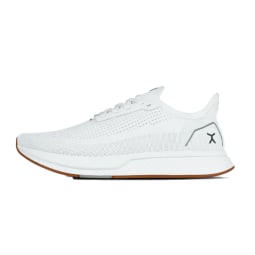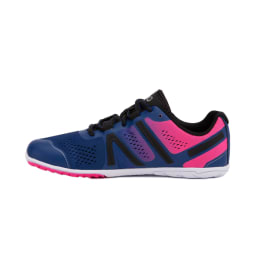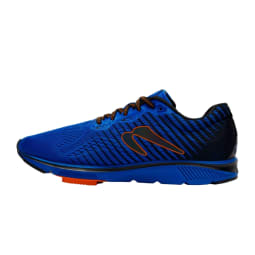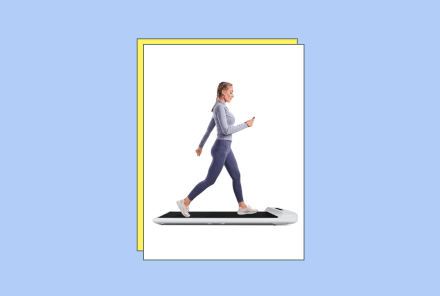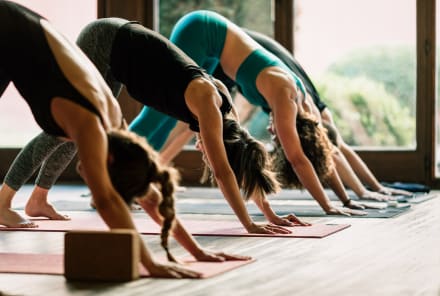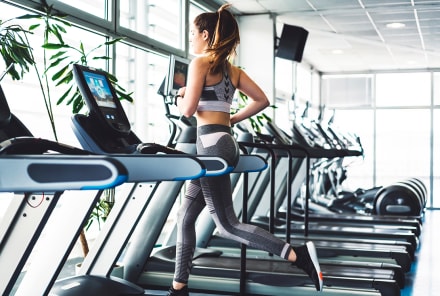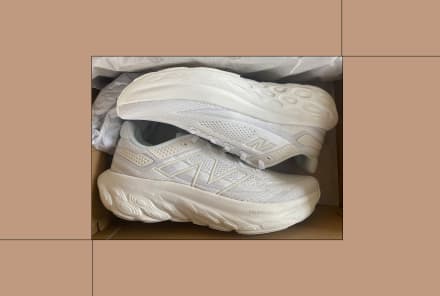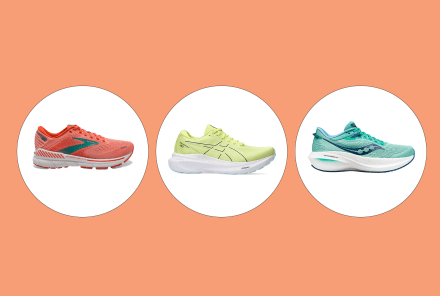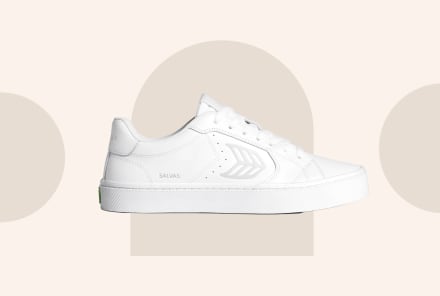Advertisement
The 7 Best Zero-Drop Running Shoes + The Benefits Of Running Barefoot


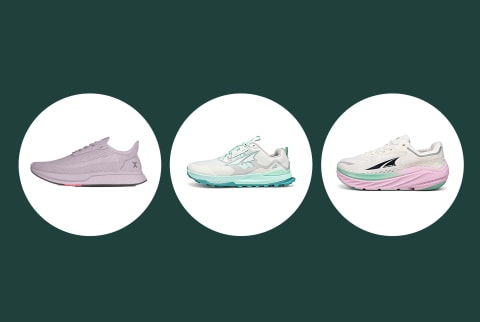
- Best for a barefoot feel: Peluva Strand
- Best for road running: Altra Paradigm 7
- Best for trail running: Altra Lone Peak 7
- Best for added cushion: Altra VIA Olympus
- Best for everyday wear: Flux Adapt Runner
- Best lightweight road shoe: Xero HFS
- Best lightweight trail shoe: Merrell Trail Glove 7
- Best for transitioning to zero-drop: Newton Gravity 12
If you’ve ever scoured the internet looking for the best running shoes, you’ve likely noticed the term “drop.” Referring to the angle between your heel and your forefoot, drop is measured in millimeters (mm). To put it simply, the greater the angle, the higher the drop. The best zero-drop running shoes feel essentially like running with bare feet.
Most running shoes have a drop of 4 to 10mm, but some runners prefer shoes that mimic the zero-drop angle our feet take when barefoot—and studies have shown some significant benefits to this type of shoe.
If you’re curious to give the style a try, you’ll want to check out some of these best zero-drop running shoes. Keep scrolling to learn more about their benefits.
What is shoe drop?
“When wearing shoes with a drop, it is akin to wearing a shoe with a wedge or a heel,” says Austin-based podiatrist, Anne Sharkey, DPM. “When we add a wedge or a heel (or a drop) to shoes, less range of motion is required at the ankle joint in order to move through the gait cycle and propel our body forward in motion.”
Again, drop is measured in millimeters. So even if you’re not wearing shoes with an obvious wedge and can’t see the angle between your forefoot and heel, odds are the shoes you wear each day have some drop.
What are the benefits of zero-drop running shoes?
“Zero-drop shoes allow your feet to move how they would when barefoot,” says Samantha Scaffidi, run coach and founder of Project Sweat Run Club. “Running in this way strengthens the feet and lower legs and allows you to become less reliant on the structure and support of a running shoe.”
In fact, in one study from 2021, runners who wore minimalist shoes for 6 months saw an increase in foot strength by 57%1. Earlier research found minimalist footwear and barefoot conditions improved running efficiency, compared to traditional running shoes.
“Because they often have minimal cushioning, zero-drop shoes allow for more natural movement and encourage less reliance on the shoe and more reliance on the muscles of the feet and legs,” echoes Samantha Lui, PT, DPT, physical therapist at Bespoke Treatments in New York City.
“According to research from 2013 and 2016, zero-drop shoes may encourage a forefoot or midfoot striking pattern while walking or running2, which can lead to better shock absorbency and fewer foot and knee injuries (compared to heel-first strikers),” Lui adds.
Zero-drop shoes are typically roomier in the toe box than other running shoes, which may be welcome news for folks dealing with bunions. They also tend to be closer to the ground (due to less cushion stack), but some brands have found a way to offer a generous amount of cushion while maintaining zero drop.
Who shouldn’t wear zero-drop running shoes?
If zero-drop shoes can make our feet stronger, keep our toes happy, and encourage a safer striking pattern, why doesn’t everyone wear them?
For starters, running is extremely personal. It’s only natural that zero-drop shoes won’t be a fit for everyone.
Even if you think making the switch to zero-drop shoes will be the right move for you, it’s important to consider the change and make note of how your body feels in the new shoes.
“The absence of a drop in a shoe will require the calf muscle to function at longer lengths (a more stretched position) than shoes with a drop,” explains Sharkey.
“Because there is little to no support [in a zero-drop shoe], the biomechanics of the foot and lower leg may be altered when running for an extended period of time, possibly leading to injuries due to impact and overuse in the arch, achilles, heels, shins, and calves,” Scaffidi adds.
Lui adds that zero drop shoes might not be suitable for people with certain conditions, including Achilles tendonitis, plantar fasciitis, or flat feet. “They may help prevent these issues by strengthening your foot muscles, but also may aggravate your symptoms if you already have the condition,” she says.
With these risks in mind, both experts emphasize the importance of a transitional period when switching from a traditional running shoe to a minimalist shoe. “Start by wearing them for walking first before progressing to running, and begin with shorter distances,” Lui suggests.
“If you are prone to heel pain, plantar fasciitis or achilles tendonitis, using zero-drop shoes without a transition period can cause an increase in pain and injury,” Sharkey warns.
Our picks for the best zero drop running shoes of 2023:
Pros:
- Very lightweight
- Mimics feeling of barefoot running
Cons:
- Only 4 color options
Size run:
6-11Colorways:
4Average weight:
7.2 ouncesReturn policy:
30 daysDesigned for walking, hiking running, and most gym activities, the Peluva Strand shoes are a standout pick for barefoot enthusiasts.
With a durable EVA midsole, these shoes feel cushioned enough for hard surfaces, while still mimicking the feeling of wearing no shoes at all.
What’s more, they’re designed with rubber treads at specific anatomical points to maintain traction on any surface, even in unpredictable weather. The mesh material is moisture-wicking and breathable, too.
Pros:
- Generous cushion
- Stylish design
Cons:
- Not all colors available in wide
- Minimal color options
Size run:
5.5-12half sizes availablesome wide sizes availableColorways:
4Average weight:
8.2 ouncesReturn policy:
30 daysPer Scaffidi, “Altra is definitely the go-to for zero-drop shoes and they offer a wide variety for those that are curious about exploring zero-drop running (as well as some newer models with more cushion).”
This breathable and responsive road shoe is one of the brand’s most popular models. With a 30mm stack of lightweight midsole foam, it’s more cushioned than most other options on this list. Still, these shoes don’t compromise a true zero-drop, barefoot feel.
The Paradigms offer Altra’s gentle GuideRail technology to encourage a neutral foot placement with each step.
Advertisement
Pros:
- Quick-dry mesh upper
- Great for wide feet
Cons:
- Not all colors are available in wide
Size run:
5.5-12half sizes availablesome wide sizes availableColorways:
8Average weight:
9.2 ouncesReturn policy:
30 daysThese roomy trail shoes from Altra are a great pick for anyone wanting more traction on their run. With a moderate 25mm stack of cushion, they’re a solid balance of responsiveness and pressure relief.
The upper is made from a lightweight mesh that’s designed to dry quickly, just in case you hit a puddle or a creek on your trail run.
The Lone Peak 7’s use Altra’s Original FootShape, the brand’s most spacious fit, which is good news for anyone running on trails with steep declines.
Pros:
- 33mm stack cushion
- Rocker design for propulsion
Cons:
- No wide sizes
- May need to order a half size up
Size run:
5.5-12half sizes availableColorways:
7Average weight:
8.9 ouncesReturn policy:
30 daysA generous 33mm stack makes this shoe Altra’s cushiest model yet. They’re a great pick for road running and logging heavy mileage.
The rocker-style design helps push your foot off the ground with each step. We also love that the shoe is super lightweight, despite its added height.
This model isn’t available in wide sizes. However, Altra’s super roomy Original FootShape Fit tends to work well for folks who typically order wide. Some reviewers note that they ordered a half size up.
Advertisement
Pros:
- Machine washable
- Carbon neutral delivery
Cons:
- No free returns
- No wide options
Size run:
6.5-15.5half sizes availableColorways:
8Average weight:
12.2 ouncesReturn policy:
30 daysWhether you’re running miles or running errands, these breathable zero-drop kicks from Flux can keep up. With a 22mm cushion stack, the Adapt Runners have a lower profile than the Altra picks above and a soft, stretchy knit upper. Best of all, they’re machine washable and shipping is carbon neutral.
As with all of the picks on this list, the Adapt Runners have a roomy toe box—however, the toe isn’t as round as some others, which may be a style win for you. Just note that this shoe runs a half size large, so you’ll want to size down.
Pros:
- Super lightweight
- 5,000 mile warranty
Cons:
- Runs small
- Limited availability on some colors
Size run:
5-12half sizes availableColorways:
6Average weight:
6.5 ouncesReturn policy:
Varies by retailerAt just 6.5 ounces, this low profile pick is the lightest zero-drop running shoe on our list. With a 5.5mm stack and a removable 2mm insole, you can get even closer to the ground.
This shoe has a mesh outer and a moisture-wicking lining to keep your feet feeling cool in any temperature. Xero is so confident in their design that the brand offers a 24-month manufacturer’s warranty and a 5,000 mile warranty on the outsoles.
Just note that these shoes are not available in wide sizes. Reviewers say they tend to run a half size small.
Advertisement
Pros:
- Uses recycled materials
- Low, lightweight profile
Cons:
- No wide sizes
- Runs one half size large
Size run:
5-11half sizes availableColorways:
5Average weight:
7.2 ouncesReturn policy:
30 daysFor a barefoot trail shoe with a low profile, try this sleek and efficient style. This shoe has a Vibram outsole that provides support and grip for the trail—although the traction on this model is slightly less aggressive than that of the Altra Lone Peaks (featured above).
The laces, mesh upper, and insole are made of recycled materials, making it one of the more sustainable picks on our list.
Because this shoe is designed for a roomy, barefoot fit, the Trail Glove 7 runs a half size large. Some reviewers also warn this version of the Trail Glove shoe has a more narrow toe box than previous models.
Pros:
- 3mm drop for those easing in
- Uses recycled materials
Cons:
- Limited colors
- Runs a half size small
Size run:
5-12half sizes availableColorways:
3Average weight:
7.2 ouncesReturn policy:
30 daysAs our experts explained, transitioning from standard running shoes to zero-drop shoes can be an adjustment—and not one to rush. These shoes have a 3mm drop, which may help make your move to barefoot a little easier.
The Gravity 12’s are a breathable, lightweight, cushy road shoe designed to keep you comfortable mile after mile.
Because they’re not a true zero-drop shoe, these are not as wide as the other models on this list (and they’re not available in wide sizes). The brand recommends ordering a half size up.
We appreciate that the brand uses recycled materials, with at least 4 recycled water bottles each shoe.
Advertisement
How we picked
Expert recommendations
After consulting the pros, we found that Altra is the main player in the zero-drop running space. We focused on this brand’s shoes, but made sure to include other options, too.
Ratings & reviews
We read tons of reviews to ensure these shoes live up to barefoot running devotees’ expectations.
Terrain
We included zero-drop shoes that are intended for road running and trail running—so wherever your workout takes you, you’ll be ready.
Price
Everyone’s budget is different, so we chose shoes to fit a variety of price points (without sacrificing quality).
Comparing the best zero-drop running shoes
| Product | Cost | Sizes | Colorways | Weight |
|---|---|---|---|---|
| Peluva Strand | $140 | 6-11 | 4 | 7.2 oz |
| Altra Paradigm 7 | $170 | 5.5-12 | 4 | 8.2 oz |
| Altra Lone Peak 7 | $150 | 5.5-12 | 8 | 9.2 oz |
| Altra VIA Olympus | $170 | 5.5-12 | 7 | 8.9 oz |
| Flux Adapt Runner | $140 | 6.5-15.5 | 8 | 12.2 oz |
| XERO HFS | $120 | 5-12 | 6 | 6.5 oz |
| Merrell Trail Glove 7 | $120 | 5-11 | 5 | 7.2 oz |
| Newton Gravity 12 | $185 | 5-12 | 3 | 7.2 oz |
Who are zero-drop running shoes a good fit for?
As Lui and Scaffidi explained, zero-drop shoes have their benefits. Anyone without a pre-existing foot injury or condition (such as flat feet or tendonitis) can give them a try.
“I do think there is a time and a place to wear a minimalist shoe, especially for those interested in exploring how that might benefit their overall sense of foundation from the feet up,” says Scaffidi.
Just remember, making the switch to zero-drop shoes does require a bit of effort. “Runners need to be willing to take the time to gradually transition from their traditional, cushioned, and supported running shoes to a minimalist shoe,” Scaffidi warns.
Scaffidi also points out that you’ll often see minimalist shoes on the feet of non-running gym-goers for strength training—although scientific research3 supporting wearing zero-drop shoes or lifting barefoot is limited.
How to choose
Consider your cushion: With the term “barefoot running,” you’d think the goal is to get your foot as close to the ground as possible, but that’s not necessarily true.
Even zero drop shoes can provide a great deal of cushion without adding any elevation between your heel and toe. If you’re someone who wants extra shock absorption while you run, prioritize the more cushy picks on our list.
Note the width options: While zero-drop running shoes typically have a wider toe box than your average running shoe, some folks still require wide sizing options. If that’s true for you, be sure to stick to a brand and model that caters to wide feet.
Take stock of traction: If you’re a roadrunner, you can likely use a shoe with normal traction. Trail runners, however, need more grip to stay stable on uneven terrain.
FAQ
How long does it take to transition to zero drop shoes?
Your relationship with your running shoes is extremely personal, so the transition time from traditional shoes to zero-drop shoes will vary for each runner.
“Literature will suggest that it can take 90 days of regular stretching to improve a contracture in the calf muscle,” Sharkey explains.
“Transitioning from a drop to a zero-drop shoe is essentially asking the calf muscle to function at a longer length. Therefore, I recommend that my patients slowly make the transition over the course of 60 to 90 days in conjunction with a calf stretching regimen to avoid any injury that may occur from transitioning too quickly.”
Do any HOKAs have zero drop?
Hoka does not make a zero-drop running shoe. However, if you’re interested in rocker style shoes, but want zero drop, you might consider the Altra VIA Olympus on our list.
Do you wear socks with zero-drop shoes?
While you may choose to take the term “barefoot running” literally, think twice before you ditch your socks. It’s important to remember that socks play a key role in preventing blisters, keeping your feet free of bacteria, and your shoes smelling fresh.
Takeaway
Barefoot running in zero-drop shoes encourages a more natural foot strike and builds strength in your feet, ankles, and legs. If you’re not sure if minimalist shoes are right for you, it’s always wise to consult your podiatrist or get a gait consultation from a running specialist. And, if you’re looking for shoes with more arch support or extra support, we’ve got you covered there too.
Meet The Experts
Watch Next
Enjoy some of our favorite clips from classes
Enjoy some of our favorite clips from classes
What Is Meditation?
Mindfulness/Spirituality | Light Watkins
Box Breathing
Mindfulness/Spirituality | Gwen Dittmar
What Breathwork Can Address
Mindfulness/Spirituality | Gwen Dittmar
The 8 Limbs of Yoga - What is Asana?
Yoga | Caley Alyssa
Two Standing Postures to Open Up Tight Hips
Yoga | Caley Alyssa
How Plants Can Optimize Athletic Performance
Nutrition | Rich Roll
What to Eat Before a Workout
Nutrition | Rich Roll
How Ayurveda Helps Us Navigate Modern Life
Nutrition | Sahara Rose
Messages About Love & Relationships
Love & Relationships | Esther Perel
Love Languages
Love & Relationships | Esther Perel
